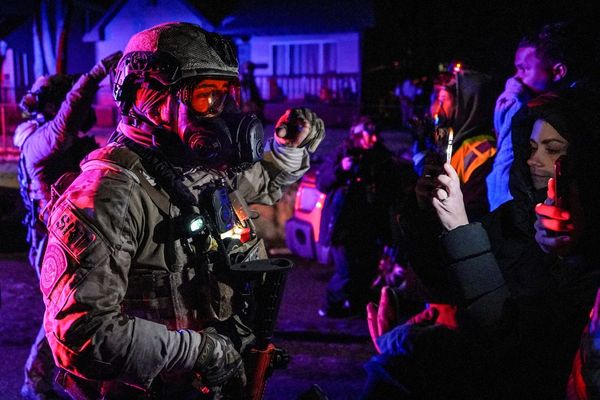NASA’s Double Asteroid Redirection Test mission, better known as DART, successfully shifted the orbit of an asteroid known as Dimorphos — a huge victory for local scientists and engineers whose work was involved in the mission, NASA officials announced Tuesday.
The space agency purposely crashed a spacecraft into the harmless asteroid, which orbited a larger asteroid, known as Didymos, millions of miles away, in late September as a test to see if in the future a killer rock could be nudged out of Earth’s way.
Johns Hopkins Applied Physics Laboratory in Laurel, Md., designed and led the DART mission for NASA while the Jet Propulsion Lab’s Center for Near Earth Object Studies, an element of NASA’s Planetary Defense Coordination Office, was tasked with determining the location of Didymos in space within 16 miles of its exact location.
It was a hard ask considering the asteroid moved more than twice as fast as a car on the freeway and scientists knew little about the composition of Dimorphos, NASA leaders explained in a livestream of the test.
It took days of telescope observations from Chile and South Africa to determine how much the impact altered the path of the 525-foot asteroid around its companion, a much bigger space rock, officials explained Tuesday.
“This mission shows that NASA is trying to be ready for whatever the universe throws at us,” NASA Administrator Bill Nelson said during a briefing at NASA headquarters in Washington.
Before the impact, the moonlet took 11 hours and 55 minutes to circle its parent asteroid. Scientists had hoped to shave off 10 minutes but Nelson said the impact shortened the asteroid’s orbit by about 32 minutes.
The impact may also have left Dimorphos wobbling a bit, according to NASA program scientist Tom Statler.
That may affect the orbit, but it will never go back to its original orbit, he said.
“This is spectacular that we’ve taken this first step,” said mission leader Nancy Chabot of Johns Hopkins University’s Applied Physics Laboratory, which built the spacecraft and managed the $325 million mission. “But we really need to also have that warning time for a technique like this to be effective.”
Along with investigators at other institutions, JPL’s Center for Near Earth Object Studies will study the plume of rock and regolith — broken rock and dust — ejected by the impact, as well as the newly formed impact crater and the movement of Dimorphos in its orbit around its parent asteroid.
-------







